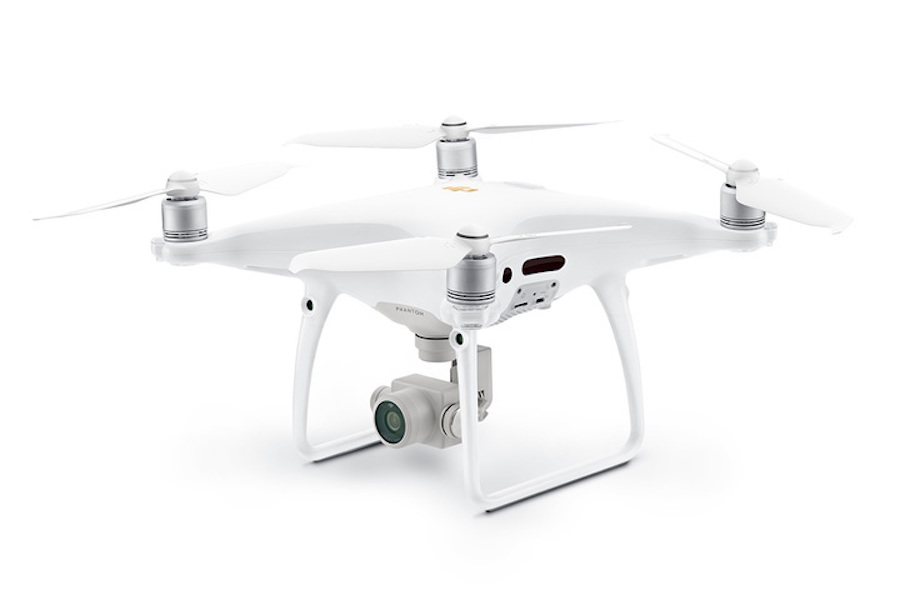DJI has officially announced the new Phantom 4 Pro V2.0. The US price for DJI Phantom 4 Pro V2.0 is $1,499 and now available for pre-order at Amazon, B&H, Adorama.
With 30 minutes of flight time, 7 km transmission range, 5-directional obstacle sensing system and 1” CMOS Sensor with 4k@60p video recording capabilities, the DJI Phantom 4 Pro V2.0 is a drone fit for prosumers and professionals who need a reliable and powerful imaging solution that can cater to diverse filming needs and mapping operations.
Retaining its iconic white airframe, the DJI Phantom 4 Pro V2.0 also has a Phantom 4 Pro+ V2.0 version, which comes with a 5.5-inch, 1080p resolution screen built-in to the remote controller for operators who often fly outdoors under direct sunlight.
DJI Phantom 4 Pro V2.0 Officially Announced, Price $1,499
Product Highlights
- 1″ 20MP CMOS Sensor
- Gimbal-Stabilized 4K60 / 20MP Imaging
- Ocusync Transmission
- FlightAutonomy with Redundant Sensors
- Four Directions of Obstacle Avoidance
- Top Speed of 45 mph in Sport Mode
- Maximum Control Range of 4.3 Miles
- Visual Tracking of Moving Subject
- Up to 30 Minutes Flying Time
- Remote Controller Included
About the DJI Phantom 4 Pro v2.0:
The new Phantom 4 Pro v2.0 features an OcuSync HD transmission system, which supports automatic dual-frequency band swiping and connects to DJI Goggles wirelessly. Like the Phantom 4 Pro and Advanced, the Phantom Pro v.20 is equipped with a 1-inch 20mp sensor capable of shooting 4K/60fps video and Burst Mode stills at 14fps. Plus, its FlightAutonomy system includes dual rear vision sensors and infrared sensing systems for a total of 5 directions of obstacle sensing and 4 directions of obstacle avoidance.
Camera with 1” 20mp Sensor:
The onboard camera hs been redesigned to us a 1” 20mp CMOS sensor. A custom engineered lens made up of eight elements is arranged in seven groups, it is the first DJO camera to use a mechanical shutter, eliminating rolling shutter distortion which can occur when taking images of fast moving subjects or when flying at high speed. In effect, it is as powerful as many traditional ground cameras. More powerful video processing supports H.246 4K videos at 60fps or H.265 4K at 30fps, both with a 100mpbs bitrate. Advanced sensors and processors ensure everything is captured with more image detail and the image data needed for advanced post-production.
1-Inch 20-Megapixel CMOS Sensor:
Sensor size is more important to image quality that the number of pixels because a larger sensor captures more information in every pixel, improving dynamic range, signal-to-noise ration, and low light performance. The 1” 20mp CMOS sensor in the Phantom 4 Pro v.20 is almost four times the size of the Phantom 4’s 1/2.3” sensor. It uses larger pixels and has a maximum ISO of 12800 as well as increase contrast. It is good enough for images to be used immediately, while also capturing enough detail for advanced post-processing.
Production Optimized 4K:
An enhanced video processing system allows video to be capture in cinema and production optimized DCI 4L/60fps at a bitrate of 100Mbps, enabling you to get high resolution slow motion shots. The Phantom 4 Pro v2. also supports H.265 video codec (Maximum resolution 4K/30fps). For a given bitrate, H.265 doubles the amount of image processing as H.264, resulting in significantly enhances image quality. Record in the high dynamic range D-log mode to make the most of this image data for color grading.
High Resolution Lens:
The resolution and contrast of a lens is critical to image quality, because only a quality lens capture sharp, vivid photos at high resolutions. The brand new Phantom 4 Pro v2.0 camera has an aerial optimized f/2.8 wide-angle lens with a 24mm equivalent focal length. It features eight elements – 2 aspherical – arranged in seven groups that fit into a smaller, more compact frame. Its images are consistently detailed with low distortion and low dispersion, ensuring that photos and videos are sharp and vivid. For the first even with DJO camera, MTF results have been made public, so people can get a better understanding of lens performance.
via DJI

